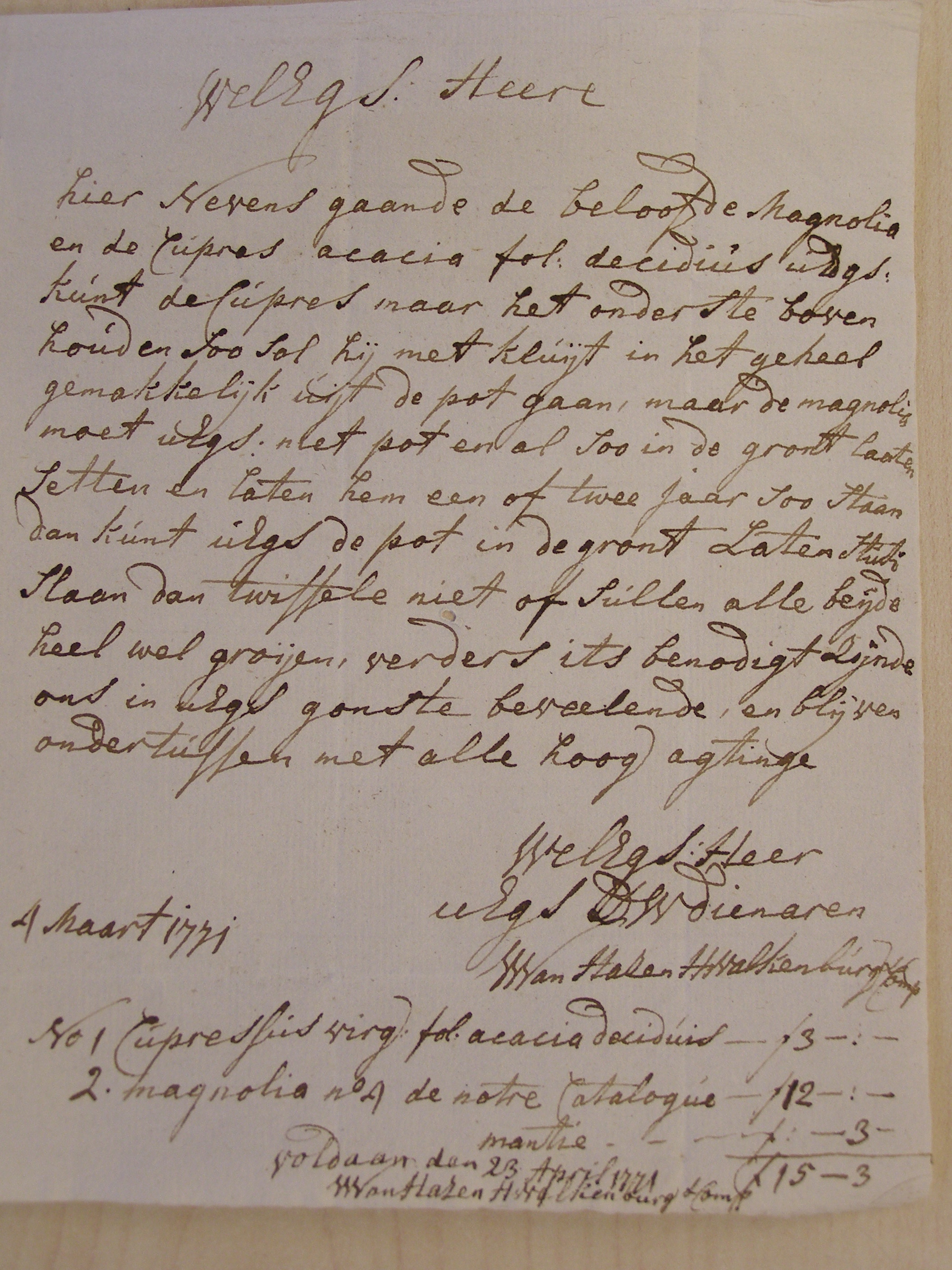Harde en Evergreene Heester Trees, Shrobbs

Published: my piece about the 18th century nurseryman Jacobus Gans, whose bold move from Haarlem to Hillegom (and his purchase of an estate there in 1771), is now explained. His formerly unknown partnership with Rotterdam merchant Bastiaan Molewater (1734-1780) played a deciding role in the rise and fall of his nursery.
The move itself makes it possible to put a date on Gans’ undated catalogues, especially because an unknown version has come to light, on which his sole address is still in Haarlem only.
Gans had ‘English’ and ‘American’ plants for sale, and mentioned that he had gone to England himself to collect them there. His use of ‘English’ terms when advertising the sales catalogue of these plants (see the advert and the title of this post), shows that no proper Dutch vocabulary was available (yet) for this type of planting material.
Published: my piece about the 18th century nurseryman Jacobus Gans, whose bold move from Haarlem to Hillegom (and his purchase of an estate there in 1771), is now explained. His formerly unknown partnership with Rotterdam merchant Bastiaan Molewater (1734-1780) played a deciding role in the rise and fall of his nursery.
The move itself makes it possible to put a date on Gans’ undated catalogues, especially because an unknown version has come to light, on which his sole address is still in Haarlem only.
Gans had ‘English’ and ‘American’ plants for sale, and mentioned that he had gone to England himself to collect them there. His use of ‘English’ terms when advertising the sales catalogue of these plants (see the advert and the title of this post), shows that no proper Dutch vocabulary was available (yet) for this type of planting material.



